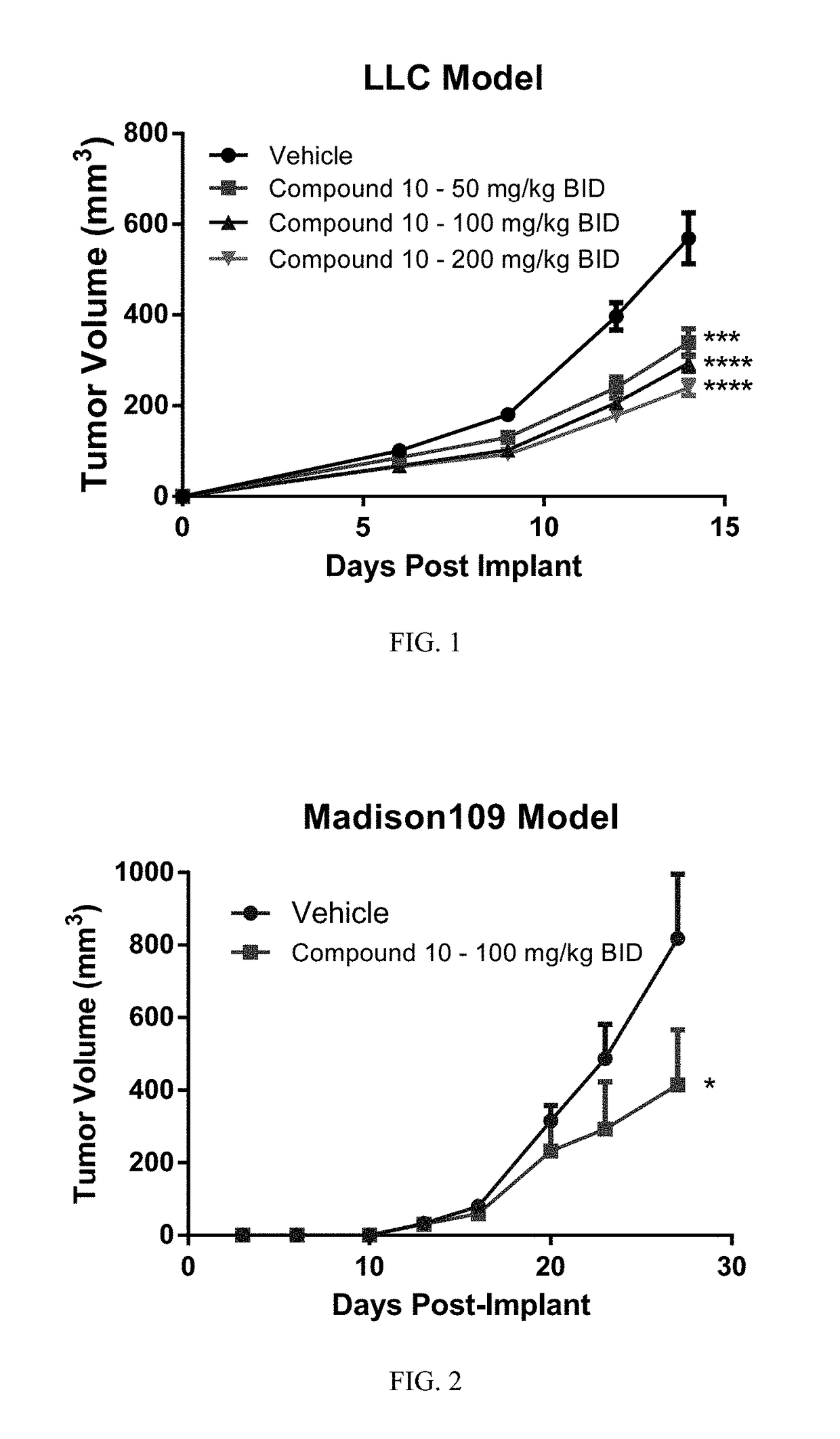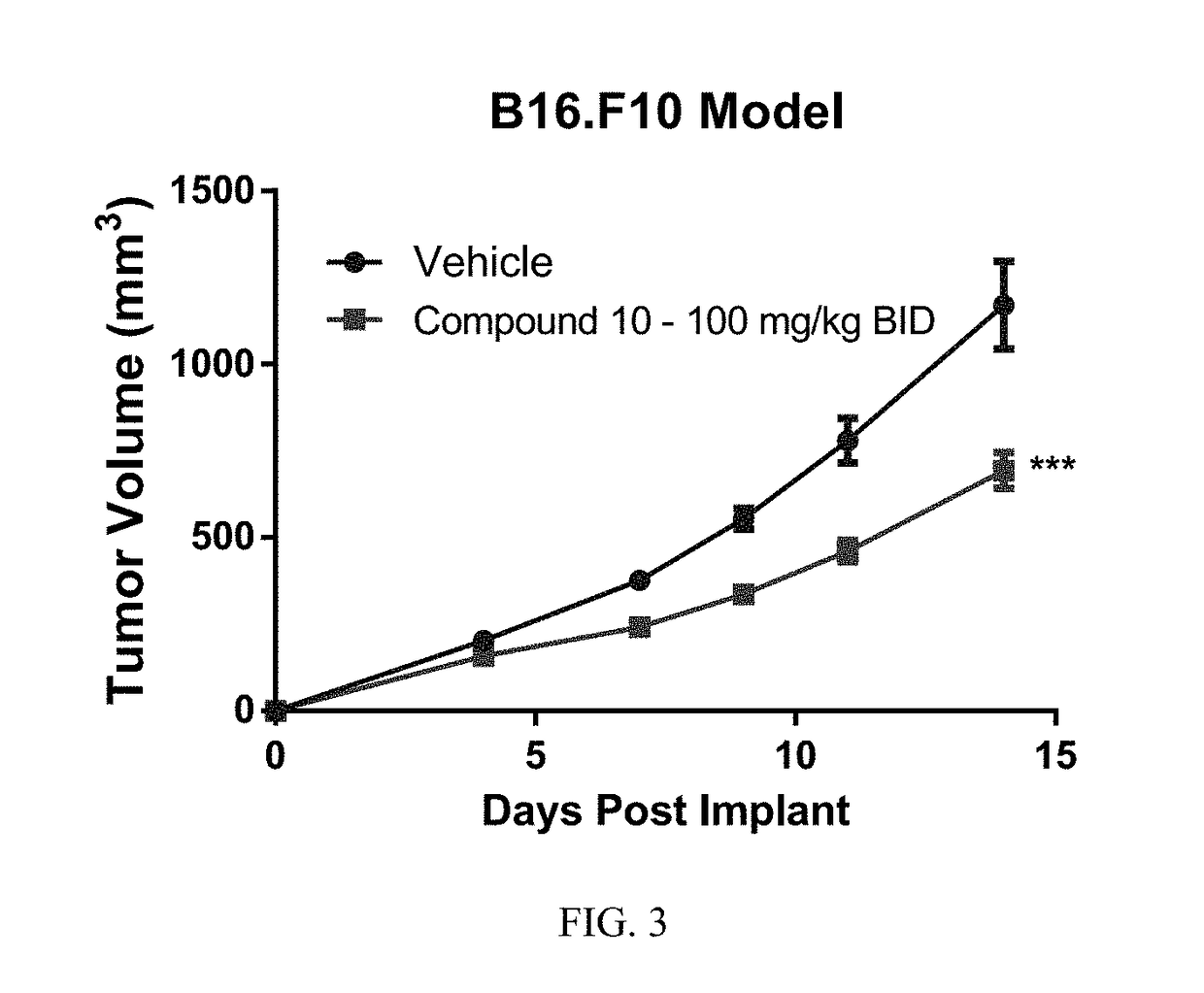Compositions and methods for inhibiting arginase activity
a technology of arginase activity and compositions, applied in the direction of antibody medical ingredients, group 3/13 element organic compounds, drug compositions, etc., can solve the problems of arginine depletion in the tumor, invasion of essential organs and often death, and inability to meet the needs of patients,
- Summary
- Abstract
- Description
- Claims
- Application Information
AI Technical Summary
Benefits of technology
Problems solved by technology
Method used
Image
Examples
example 1
Methods
[0321]The scheme below and subsequent experimental procedures illustrates a general method that can be used to prepare examples included in the invention. Variations in the method may be preferable depending on the salt form desired. For example, if the hydrochloric acid salt is desired, intermediate 8 can be treated with hydrogen gas in the presence of palladium on carbon to give intermediate amino acid 9. Subsequent treatment with aqueous hydrochloric acid gives the target arginase inhibitor 10 as the hydrochloric acid salt.
[0322]If the free-base is desired, intermediate 8 can be used in a modified procedure. Here, treatment with trifluoroacetic acid followed by isobutylboronic acid gives intermediate amine 12. Subsequent reduction of the azide and deprotection of the benzyl ester using hydrogen gas in the presence of palladium on carbon gives target arginase inhibitor 13 as a free-base. A detailed description of these methods is provided below.
Synthesis of (3R,4S)-3-amino-...
example 2
vailability Studies
[0374]Compound dosing solutions were prepared at 2.5 and 5 mg / mL in water. Female C57BL / 6 mice (16-20 g) from Charles River Laboratories (Hollister, Calif.) were housed in cages for at least 3 days prior to dosing. PicoLab 5053 irradiated rodent diet was provided ad libitum throughout the study. Compounds were administered once to the appropriate animals by oral gavage at either 25 or 50 mg / kg (10 mL / kg). Blood samples were collected (3 animals per time point) at 30 min and 1, 2, 4, 8 hr post-dose for the 25 mg / kg studies, and at 1 hour for the 50 mg / kg studies. The blood samples were maintained on wet ice and then centrifuged for 10 min in a refrigerated centrifuge. The resultant plasma was separated, transferred to labeled polypropylene tubes and stored frozen in a freezer set to maintain under −70° C. until analysis.
[0375]The plasma samples were analyzed by an LC-MS system. 50 μL of a plasma sample was mixed with 100 μL of acetonitrile / water (80:20) with 0.1% T...
example 3
inetic Studies
[0380]The pharmacokinetics of the compounds of the invention were studied after administration of a single dose (50 mg / kg) at a single time point (1 hour) in mice. Plasma concentrations were determined as described in Example 2. Results for exemplary compounds are shown below:
[0381]
PUM
| Property | Measurement | Unit |
|---|---|---|
| enantiomeric excess | aaaaa | aaaaa |
| enantiomeric excess | aaaaa | aaaaa |
| enantiomeric excess | aaaaa | aaaaa |
Abstract
Description
Claims
Application Information
 Login to View More
Login to View More - R&D
- Intellectual Property
- Life Sciences
- Materials
- Tech Scout
- Unparalleled Data Quality
- Higher Quality Content
- 60% Fewer Hallucinations
Browse by: Latest US Patents, China's latest patents, Technical Efficacy Thesaurus, Application Domain, Technology Topic, Popular Technical Reports.
© 2025 PatSnap. All rights reserved.Legal|Privacy policy|Modern Slavery Act Transparency Statement|Sitemap|About US| Contact US: help@patsnap.com



